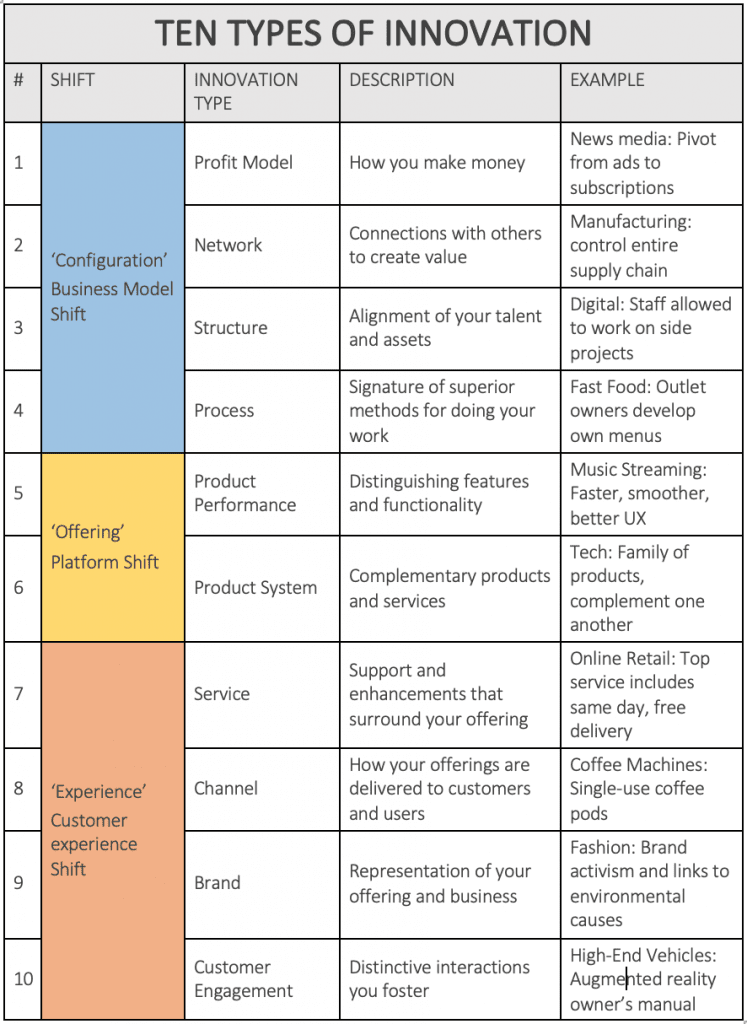 ‘Harmony’ is one of the elements that is good for business. However, the further reality is that there needs to be a little ‘constructive tension’ in any organisation, to challenge accepted norms, alongside the freedom to express these challenges to take business and organisational thinking to new heights and promote supplier innovation. This often feels like an uncomfortable process, and it is, but structured positively, it helps individuals test their thinking.
‘Harmony’ is one of the elements that is good for business. However, the further reality is that there needs to be a little ‘constructive tension’ in any organisation, to challenge accepted norms, alongside the freedom to express these challenges to take business and organisational thinking to new heights and promote supplier innovation. This often feels like an uncomfortable process, and it is, but structured positively, it helps individuals test their thinking.
As George S. Patton (a General in the United States Army) said: “If everyone is thinking alike, then someone isn’t thinking,”
Due to our involvement in optimising over 500 complex strategic supplier relationships within both private- and public-sector organisations, we have been a part of the development of some really great innovation-led practices.
Strategic supplier innovation continues to be more important than ever, as organisations are increasingly expected to cut overheads and costs while improving services. And, there are many suppliers out there with the skills to drive cost-saving innovations. However, too few strategic partnerships have experienced reduced innovation due to the pressure from some to remain in a static place where profits and pragmatism are prized over originality and value adding work.
As part of our work over the last 20 years, we’ve found that while enabling (as opposed to just talking about) innovation between client organisations and suppliers can be quite challenging at the outset, it’s often even more challenging to maintain this enthusiasm for innovation throughout the lifecycle of the relationship; to drive it every single day in a relentless way.
The key to keeping it going is quite simple conceptually, but unfortunately it is exceptionally hard to implement. It’s by having the discipline to undertake small, yet seemingly tedious, steps, each day, every day to move things in the right direction –
(1) Discover/review (2) Design (3) Deliver (4) Measure
It’s about capturing the issues that cause challenges (and those which deliver good outcomes), on a daily basis, collating them and reviewing them with your internal client and supplier teams every three to six months, subject to the criticality of the service being delivered. Note – ideally, there should be no longer than six months between these meetings.
It is then important to pilot more of what works well, change the target operating model of what does not, update your outcomes, objectives, operating processes, financial models and contract terms. Rinse and repeat every three to six months – again, subject to the criticality of the service being delivered. We call it ‘re-shaping’ and it is built into every strategic supplier relationship we advise on so that they drive maximum value for the lifecycle of the relationship. The key to innovation is to keep testing, trying and shaping; implementing on-going improvements.
Why is supplier innovation so scarce?
Ideas are relatively easy to come by, they are the vital starting point, but it’s the commitment to and implementation of those ideas which presents the real challenge because most organisations simply are built to strive for efficiencies rather than innovations. This conflict between the priorities of achieving efficient business-as-usual results and innovation, often leaves little room and resources for innovation. In our experience, most organisations have the kind of creativity and technological ability to innovate, but what they are lacking is the management skill to convert those ideas into reality.
The pandemic of recent years has only made things worse. As businesses have struggled to ‘keep the wheels on’, their focus has been almost entirely on business as usual, with very little room for innovation. As we exit these challenging times, it’s vital that relationships are reset when it comes to these priorities, as longer term success is reliant on the way your strategic relationships embrace the need for innovation.
In reality, a successful environment for fostering innovation must take into account the needs of business-as-usual team and a collaborative framework must be formed between business leaders in these two areas to take into account the needs of all concerned.
The importance of supplier innovation in a competitive marketplace
England has a population of just shy of 56 million people but is home to 5.2 million private businesses (1.1 million of which are based in London), with approximately 500 new businesses joining them every day. We live in a crowded marketplace, and no matter whether your area of expertise is in logistics or rocket science, you’ll find that there are many others out there claiming to do exactly what you do. Therefore it is vital that your business finds a way to stand out and differentiate itself.
From the 1980s, success was based on who had the biggest megaphone, metaphorically speaking. It was all about who had the highest number of marketing people, the biggest marketing agencies and advertising budgets, and how that led to more brand exposure.
Today, the internet has, to some degree, levelled the playing field as digital marketing has allowed some smaller organisations to increase the scale of their exposure enabling them to compete for the same ‘eyes’ as larger organisations, all for a lower cost. In this way, new ways of attracting business emerge. For many, that’s where innovation comes in – why fight on a level playing field when you can define your own field and who is allowed onto it?
An interesting article in Visual Capitalist concerns some research a consultancy called Doblin conducted to condense all forms of business innovation into just ten categories. It’s a really helpful way in which to consider innovation.
Doblin’s research and findings:
While we all know this is not a new discovery, it’s taken a while to codify it like this. Doblin claim that they discovered their ‘ten types of innovation’ back in 1989 and have been working on fine tuning their understanding of them ever since.

The important point to recognise is that often these innovation types need to be combined for best effect. Individually, they will often affect one another, but together you can develop real competitive advantage.
Configuration
Innovation types 1 to 4 are all carried out behind the scenes. This inherent ‘invisibility’ is the reason why they have so often, in the past, been ignored or not considered to be innovation in the first place, but all have their part to play in providing the foundational shifts that could trickle down to other more customer-facing innovation types.
Each of these four types provides a Business Model Shift that Doblin defines as follows ‘This kind of innovation focuses first on configuring assets, capabilities and other elements of the value chain to serve customers and make money differently’. The example they provide is of Zipcar, which developed a whole new way for customers to reserve and pay for their rental rides. Through creating a network, fleet customers could find cars parked in their location and pay by the hour for their hire.
Your (new) offering
This is the obvious section of the innovation table, the one most people associate with innovation. However, because of this it is much more difficult to stand out using these types alone. For example, with software applications, most products and services evolve over time, with new features and functions added. But to succeed in a Platform Shift, you need to reimagine how your customers may wish to use your products, and reverse engineer from there.
The example they give is of Amazon, which started out as a successful online book retailer. Instead of simply offering more in that space, they leveraged their huge database to determine significantly different markets to dominate.
Customer experience
Anything that has an impact on your customer experience is likely to show rapid results. The problem is that those results may be positive or negative, so it’s important to listen to your audience and to be prepared to pivot if need be.
The ‘Customer Experience Shift’ looks to engage in distinctive ways, but be careful, as you may intend to go over and above for a short-term campaign, but an audience can become accustomed to this and react badly to it being taken away. Plus, the expectation’s bar is often set pretty high as so many in the market try to compete on ‘experience’, so you’ll need to back this up with real substance.
The example provided was Starbucks, which found a way to scale up the friendly local European coffee shop while providing a consistently exceptional service no matter where in the world you walked into one of their outlets.
Three ways you can influence innovation in your strategic supplier relationships
Innovation can elevate a standard supplier relationship to an impressive collaborative working partnership. The measurement of the priority your supplier places on innovation should be an integral part of your procurement process. Their commitment (and evidence) to drive new practices and processes, to imagine big and always be looking for more efficient ways of achieving your goals, is central to the success of your organisation.
The problem is that the pressures on effort and resources of ‘business as usual’ can leave little airtime for innovation. Often the ideas are the easy part: it’s finding those with a willingness to formulate, take action, measure the results and implement the lessons learned that are the tough parts.
We’ve put together three of the most effective steps to sustain innovation that we’ve observed within top organisations that drive maximum value in their complex strategic supplier relationships:
-
- Prioritise collaboration
Innovation does not happen in a vacuum. It requires involvement from both supplier and client. Make yourself open and available, build a cross party team that consists of the brightest minds from your side and theirs, ensure communication is fluid and that everyone knows not only their role in the team and process, but the importance you place on their work and the potential ramifications of success – and learning from failure.
-
- Encourage positive failure
Results are the goal, but they are not the only goal. It’s important to ensure that everyone involved recognises that innovation requires experimentation, and experimentation sometimes requires numerous failures before a success is achieved. The focus should be on ideas as much as positive outcomes. The important thing is that through success should come advancement and through failure should come wisdom to be applied to the next experiment and the next, with a view to the ‘possibility’ of success rather than the ‘expectation’ of it. Innovation is a process of learning which enables an organisation to build the knowledge it needs to improve its chances of delivering successes in future innovation iterations.
How you and your team handle failures will help determine whether you achieve a success some way down the line. It can be easy to become disheartened or to blame others, but the cohesiveness of the team and their belief in both each other and the possibility of success, as well as learning from those failures, is the resilience any innovation team needs to achieve its goals.
Be mindful that some people will have great ideas, but they may just be bad at explaining and/or contextualising them to others. This is why it’s important to build a business environment in which all ideas, no matter how left-field they may be, will be listened to, evaluated and seriously considered. Such a positive environment will encourage more experimentation from more of the team and sometimes the best ideas come from a less evolved starting point.
-
- Create a culture of commercial trust
As mentioned above, the road to innovation success is littered with failure, and failure can be difficult to take, but take it you must. As the pressure of failure mounts it can put a strain on even the strongest relationships, but the longer you can maintain the team’s commitment to providing a unified front, the better chance you have of success.
Creating a culture of commercial trust is one of the key components in achieving this, of driving the right behaviours between team members from both the client and supplier sides, even when they become frayed at the edges. This is the strong foundation that your innovation team can rely on, the support that holds everything up and together. To read a little more about the importance of commercial trust and its role in the success of your strategic relationships you can read one of the many articles we’ve dedicated to this subject, such as What is Commercial Trust in Strategic Supplier Relationships and is it Important? Or you could do a deeper dive into the subject with the white paper we’ve written on the subject called Problematic Outsourcing Relationship? 8 Steps to Improve Performance, Rebuild Trust and Maximise Value.
Conclusion
The categorisation of innovation by Doblin makes for a really interesting read. And while it may seem like a rare aspiration, if you are able to make it an integral part of any and all of your strategic supplier relationships, you will have already increased the chances of your project succeeding.
Too much focus on costs at the expense of value will inevitably lead to strategic suppliers feeling pressured into relationship decisions or behaviours that move both parties away from generating much greater financial, operational and innovation value through a collaborative partnership, and all the benefits that usually brings. And, allowing this to go unchecked will create an environment where it is considered ‘the norm’, something you should probably be looking to avoid.
If you wish to find out more about how we have driven innovation within some of the hundreds of complex strategic relationships we have guided over the years, do feel free to get in touch.

